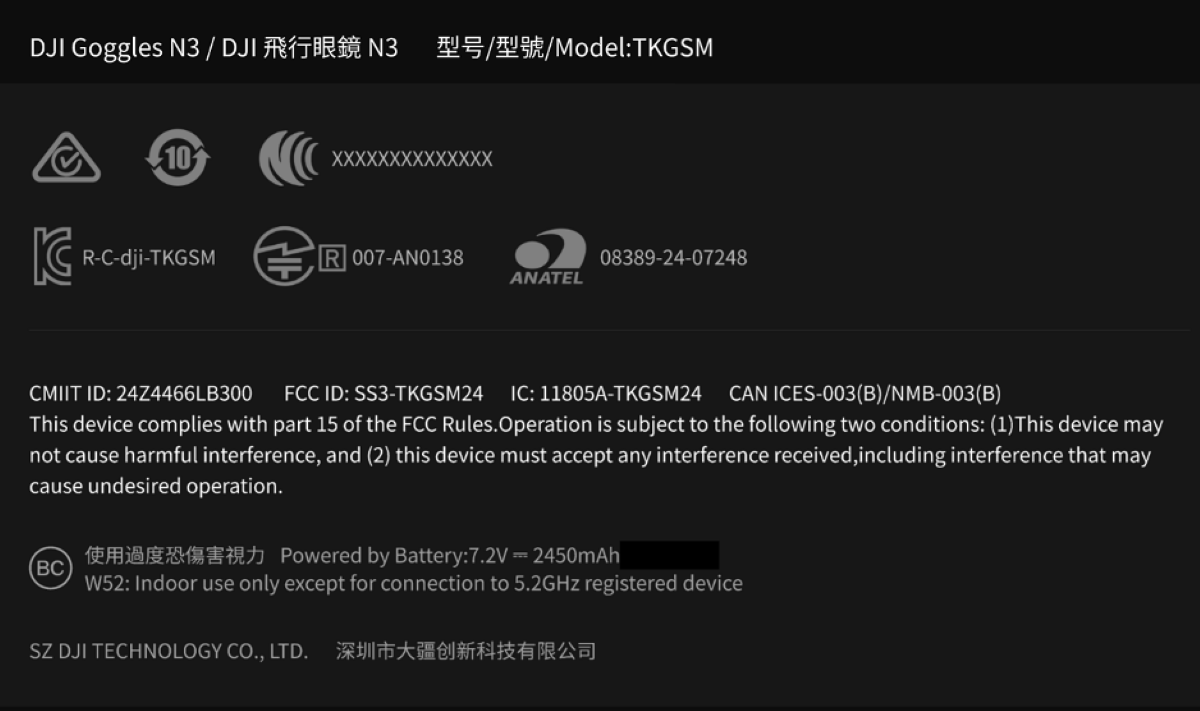
Excitement is building around DJI’s upcoming N3 Goggles, and now, thanks to leaks and a surprise appearance in the Philippines, we’re learning even more about what these high-tech goggles will bring to the world of first-person view (FPV) drone flying. With a European release reportedly just around the corner and pricing details now out, the N3 Goggles are poised to make a big impact for DJI fans across the globe. For US fans though, the timeline is a bit murky as import issues could delay the official launch.
The latest scoop comes from well-known DJI leaker Jasper Ellens, who revealed that the N3 Goggles have already been spotted in the Philippines, suggesting a wide global release is on the horizon. In Europe, we now know that the DJI Neo Motion Fly More Combo could cost €529, while the standalone N3 Goggles headset might be priced at €260. With a European launch expected as soon as next week, DJI enthusiasts across the pond won’t have to wait long to get their hands on the latest in FPV technology. For US customers, however, it’s a waiting game, as there’s currently no set release date due to customs and import issues.
What the DJI N3 Goggles offer
Designed to be paired with the DJI Avata 2 or indoor-friendly Neo drones along with the DJI RC Motion 3, the N3 Goggles aim to deliver an ultra-immersive flight experience. With head-tracking capability, these goggles let pilots control their drone’s movements with head or wrist motions, making every swoop and turn feel like you’re right there in the pilot seat. The N3 Goggles also allow for impressive aerial stunts like 360-degree flips and 180-degree drifts, adding a new layer of excitement to FPV flights.
According to leaks, the N3 Goggles come equipped with a full 1080p 60Hz LCD screen that offers a 54-degree field of view (FOV). This wide viewing angle and high-resolution screen promise minimal dizziness, giving FPV enthusiasts smooth, immersive visuals. For creators, the goggles reportedly capture videos up to 4K/60fps, making it ideal for both casual flying and professional content creation.
DJI O4 video transmission
At the heart of the N3 Goggles is DJI’s O4 video transmission system, boasting a 2T4R antenna design for anti-interference capabilities and ultra-low latency. With a live feed of 1080p at 60fps, latency clocks in at just 31ms when paired with the Avata 2 and 58ms with the Neo, creating a near-real-time experience. The transmission range reaches up to 13 km with the Avata 2 and 10 km with the Neo, so long-distance flights are well within reach.
Also see: $199 DJI drone makes Time’s list of Best Inventions of 2024
To ensure a smooth experience, the N3 Goggles automatically switch between 2.4 GHz and 5.8 GHz frequencies to avoid interference. The transmission bitrate maxes out at 60 Mbps, which keeps the visuals steady and clear even when the drone is zooming along at high speeds.
And it appears that DJI hasn’t skimped on comfort with the N3 Goggles, either. These goggles feature a spacious interior that accommodates glasses, so there’s no need for extra adjustments or lens inserts. Simply put on the goggles, and you’re ready to go. They also include a handy one-tap defogging feature that uses an internal fan to prevent fog buildup, ensuring uninterrupted visuals in humid or rapidly changing temperatures.
To make wearing the goggles for extended periods more comfortable, DJI has balanced the weight with an integrated headband and battery design, relieving pressure from your face. This means you can focus on flying, not adjusting your gear.
Further, leaks indicate that the N3 Goggles introduce an AR cursor function that works with the DJI RC Motion 3. This cursor makes it easy to activate features and adjust settings without having to take your hands off the controller. Sharing the flight view is also simple — just connect the goggles to your smartphone via USB-C, and you can display a secondary live feed through the DJI Fly app, making it easy to let friends and family see what you’re seeing in real-time.
With a 2.7-hour battery life, the N3 Goggles have plenty of power to match the DJI Neo’s impressive flight capabilities. A single charge lasts long enough to power through up to 13 Neo drone batteries, letting you stay airborne without constant recharging.
While DJI hasn’t officially confirmed all the details, these leaked specs paint a clear picture of the N3 Goggles as an exciting, immersive upgrade for FPV fans. With the release in Europe expected next week, it seems like only a matter of time before the N3 Goggles make their official debut in other markets as well. For those in the US, however, it looks like we’ll have to keep our fingers crossed as DJI navigates customs hurdles. Stay tuned for more updates as the launch approaches!
Read more: DJI Mic Mini leak teases compact, under $50 microphone
FTC: We use income earning auto affiliate links. More.






Comments